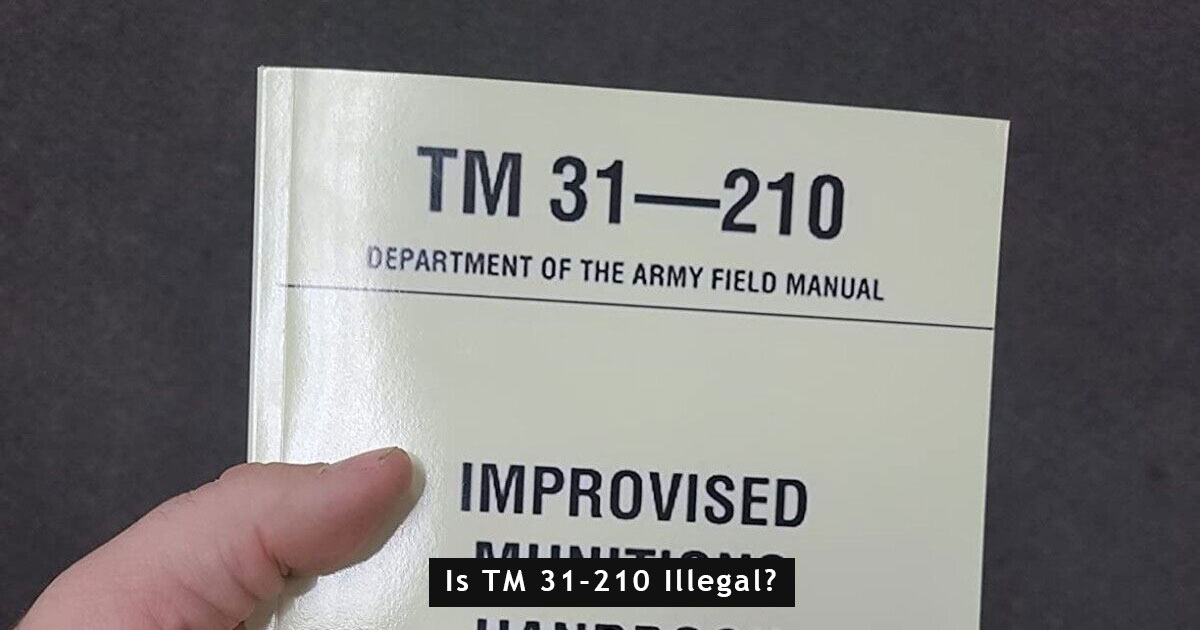The TM 31-210 Improvised Munitions Handbook, a document initially published by the United States Army, has sparked widespread curiosity and debate regarding its legality. This text delves into the intriguing world of improvised weaponry and its applications, raising questions about the legal implications of possessing, distributing, or utilizing such a military manual. Our exploration aims to shed light on these legal aspects, providing a comprehensive understanding of TM 31-210’s place in both military history and civilian contexts.
What is TM 31-210?
TM 31-210, also known as the Improvised Munitions Handbook, is a technical manual originally intended for the United States Army Special Forces. Published in 1969, this manual provides detailed instructions on fabricating various types of ordnance using readily available materials. Spanning 256 pages, it covers a range of topics including explosives, propellants, mines, grenades, small arms, ammunition, and even incendiary devices. The handbook is known for its detailed guidance on creating improvised explosive devices (IEDs) and unconventional warfare tools from common household items and materials found in junk piles.
Legal Status of TM 31-210
The legal status of TM 31-210 is a complex issue, shaped by its historical background, contents, and the context of its use. Originally classified, the manual was later declassified and released into the public domain under the Freedom of Information Act (FOIA). This release means that the manual itself is legally available to the public in various formats. However, the legality of using the manual’s instructions to create weapons or explosives is a different matter. It’s governed by a myriad of federal and state laws that regulate the possession of explosives, firearms, and related materials. The application of these laws can vary significantly depending on the specific activities involved and the jurisdiction in which they occur.
Controversial Aspects of TM 31-210
TM 31-210, known for its detailed instructions on creating improvised weapons, has been a subject of controversy since its release into the public domain. The handbook’s primary concern is its potential misuse, as it provides practical information on manufacturing explosive devices and unconventional warfare tools. This aspect has led to debates about the responsibility and ethics of making such information widely accessible. The use of TM 31-210’s instructions in conflicts against U.S. troops, as seen in Vietnam and Afghanistan, further highlights its controversial nature. The dilemma centers around the balance between the freedom of information and national security concerns, as well as the potential for misuse by individuals or groups with malicious intent.
Safety and Legal Concerns
The practical application of TM 31-210’s content raises significant safety and legal concerns. While owning the manual may be legal, using its instructions to create weapons or explosives can lead to severe legal repercussions under various federal and state laws. The manufacturing of explosives and weapons, especially without proper licensing, can result in criminal charges. Furthermore, the manual’s guidance involves handling hazardous materials and potentially dangerous chemical reactions, posing risks of accidents, injuries, or even fatalities. This risk underscores the importance of adhering to safety regulations and legal guidelines when dealing with such materials.
Public Reaction and Usage
The public reaction to TM 31-210 has been mixed. On one hand, it’s viewed as a valuable historical and military document, providing insights into unconventional warfare and resistance tactics. On the other hand, there’s concern about its potential to aid criminal or terrorist activities. The manual has found a place in various contexts, from academic and military studies to more nefarious uses by individuals or groups interested in guerrilla warfare tactics. Its appearance in popular culture, such as movies and literature, further indicates its widespread recognition and the diverse range of reactions it elicits.
Conclusion
TM 31-210, while legally available, presents complex ethical, safety, and legal challenges. Its role as a source of information on improvised weaponry places it at the center of debates on information freedom, public safety, and national security. While it serves as a historical and educational resource, the potential for misuse cannot be ignored. It’s imperative for individuals and entities accessing this manual to understand the legal boundaries and safety risks associated with its content. The TM 31-210 case underscores the need for responsible dissemination and use of sensitive information in our modern world.









Leave a Reply